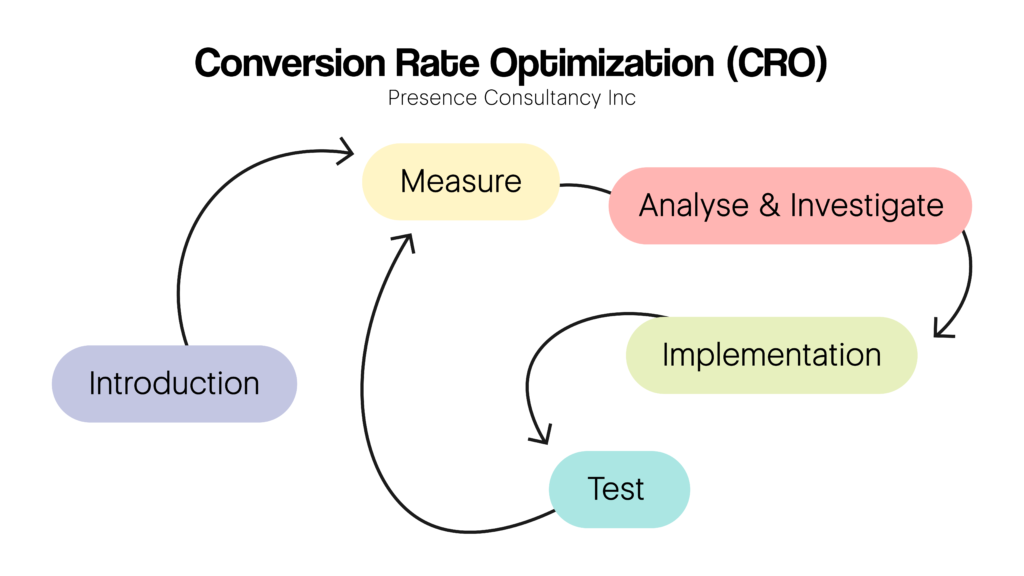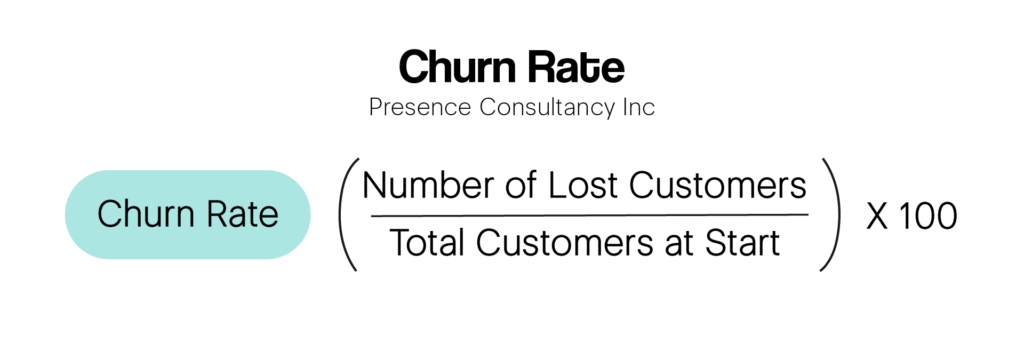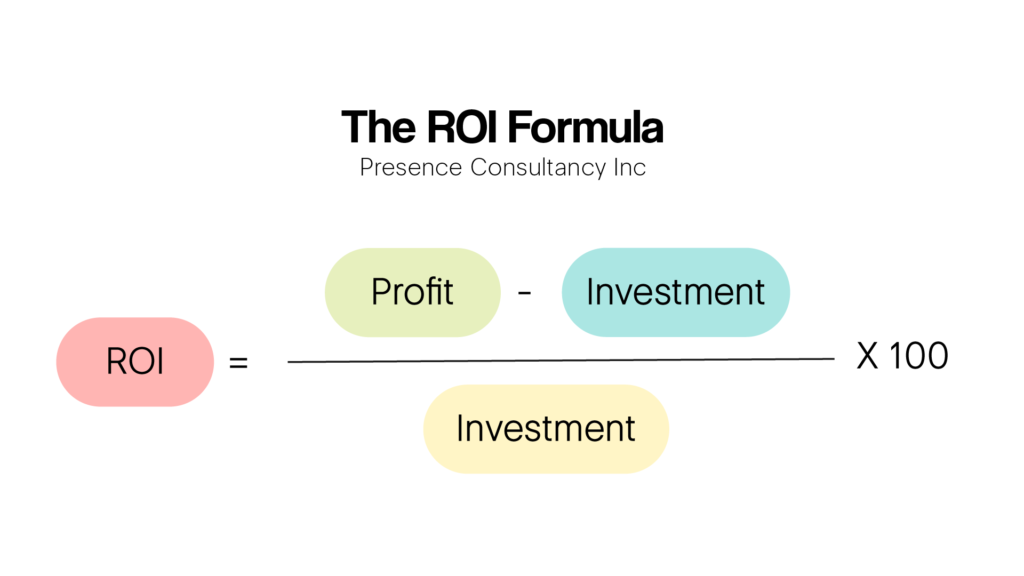Understanding and measuring ROI (return on investment) is a game-changer for any business owner. In this insightful guide, we break down the key metrics that really matter, ensuring you focus on what counts to drive your business forward. Dive in to learn about the essential ROI metrics and how they can revolutionize your marketing strategy.
Properly measuring ROI helps you allocate resources effectively, optimize your strategies, and ultimately drive more profitable decisions. But how do you identify the metrics that truly matter? This guide will reveal the most crucial metrics for measuring ROI and how they can significantly impact your business.
Customer Acquisition Cost (CAC)
Definition
Customer Acquisition Cost (CAC) is a critical metric that measures how much it costs to acquire a new customer. This metric is calculated by dividing the total marketing and sales expenses by the number of new customers gained during a specific period.
Calculation

Strategies to Lower CAC
- Optimize Marketing Channels: Focus on the channels that provide the highest conversion rates at the lowest costs.
- Enhance Sales Processes: Streamline sales processes to reduce costs and improve efficiency.
- Leverage Data Analytics: Use data analytics to understand customer behaviors and tailor your marketing strategies accordingly.
Customer Lifetime Value (CLV)
Definition
Customer Lifetime Value (CLV) represents the total revenue a customer is expected to generate throughout their relationship with your business. CLV helps you understand the long-term value of your customers and whether your acquisition costs are justified.
Calculation

CLV vs CAC
Comparing CLV to CAC can provide valuable insights into the sustainability of your business model. Ideally, your CLV should be significantly higher than your CAC.
Strategies to Increase CLV
- Enhance Customer Experience: Provide exceptional customer service and support to increase loyalty.
- Offer Personalized Products and Services: Tailor your offerings to meet the specific needs of your customers.
- Implement Loyalty Programs: Encourage repeat purchases through rewards and loyalty programs.
Conversion Rate
Definition
Conversion rate measures the percentage of visitors who take a desired action, such as making a purchase or signing up for a newsletter. This metric is a direct indicator of your marketing campaign’s effectiveness in driving user actions.
Calculation

Improving Conversion Rates
- A/B Testing: Test different versions of your website or ads to see which performs better.
- Clear Call-to-Actions (CTAs): Use compelling and clear CTAs to guide visitors towards the desired action.
- Optimize Landing Pages: Ensure your landing pages are relevant, engaging, and easy to navigate.
Return on Ad Spend (ROAS)
Definition
Return on Ad Spend (ROAS) calculates the revenue generated for every dollar spent on advertising. This metric helps you understand the effectiveness of your ad campaigns in generating revenue.
Calculation

Optimizing Ad Spend
- Targeted Advertising: Focus on highly targeted ads to reach the most relevant audience.
- Monitor Performance: Regularly monitor ad performance and make adjustments as needed.
- Invest in High-Performing Ads: Allocate more budget to ads that are performing well to maximize returns.
Churn Rate
Definition
Churn rate indicates the percentage of customers who stop using your product or service over a specific period. This metric is particularly important for subscription-based businesses.
Calculation

Reducing Churn Rate
- Improve Customer Support: Provide exceptional support to address issues promptly.
- Engage Customers: Keep customers engaged with regular communication and updates.
- Gather Feedback: Regularly collect customer feedback and make improvements based on their input.
Marketing Attribution
Definition
Marketing attribution is the process of determining how different marketing channels contribute to conversions. Attribution models can help you understand the customer journey and allocate resources to the most valuable touchpoints.
Types of Attribution Models
- First-Touch Attribution: Credits the first touchpoint for the conversion.
- Last-Touch Attribution: Credits the final touchpoint before the conversion.
- Multi-Touch Attribution: Distributes credit across multiple touchpoints involved in the conversion process.
Using Attribution for Better Insights
- Analyze Customer Journeys: Understand how customers interact with your brand across different channels.
- Allocate Budget Effectively: Invest in the channels that drive the most conversions.
- Improve Marketing Strategies: Use insights from attribution models to refine your marketing strategies.
Marketing ROI
Comprehensive ROI
Marketing ROI is a comprehensive metric that considers all marketing expenses and the resulting revenue. This metric provides an overall view of your marketing campaigns’ profitability.
Calculation

Overall Marketing Performance
- Measure Campaign Effectiveness: Understand which campaigns are driving the most revenue.
- Optimize Budget Allocation: Allocate budget to the most effective campaigns.
- Improve Profitability: Use ROI insights to improve overall marketing profitability.
Setting Clear Goals
Importance
Setting clear, measurable goals is crucial for any marketing campaign. Goals provide direction, motivate your team, and serve as benchmarks for success.
Examples of Measurable Goals
- Increase Website Traffic: Aim to increase traffic by a specific percentage over a set period.
- Boost Conversion Rates: Set a goal to improve conversion rates by a certain percentage.
- Reduce CAC: Aim to lower your customer acquisition cost by a specific amount.
Using Analytics Tools
Tools Overview
Analytics tools are essential for tracking and measuring the performance of your marketing efforts. Tools such as Google Analytics, HubSpot, and SEMrush provide valuable insights.
Implementation
- Set Up Tracking: Ensure proper tracking is set up on your website and marketing channels.
- Monitor Performance: Regularly monitor key metrics and adjust your strategies accordingly.
- Analyze Data: Use data analytics to gain insights into customer behavior and campaign performance.
Benefits
- Informed Decision-Making: Make data-driven decisions to improve marketing strategies.
- Optimize Campaigns: Continuously optimize campaigns based on performance data.
- Improve ROI: Use insights to enhance overall marketing ROI.
Attribution Models
Different Models
There are several attribution models to choose from, each providing different insights into your marketing efforts.
Choosing the Right Model
- First-Touch Attribution: Use for understanding initial engagement.
- Last-Touch Attribution: Use for understanding final conversion points.
- Multi-Touch Attribution: Use for a comprehensive view of the customer journey.
Impact on ROI Measurement
- Detailed Insights: Gain detailed insights into which channels drive conversions.
- Better Resource Allocation: Allocate resources more effectively based on attribution insights.
- Improved Strategies: Refine marketing strategies to focus on the most impactful channels.
A/B Testing
Importance
A/B testing is a powerful tool for optimizing your marketing efforts. By testing different variations, you can identify what works best.
How to Conduct A/B Testing
- Identify Variables: Choose the elements you want to test, such as headlines, CTAs, or images.
- Create Variations: Develop different versions of the element to test.
- Run the Test: Implement the variations and track performance.
- Analyze Results: Determine which variation performed better and implement the winning version.
Analyzing Results
- Measure Impact: Assess the impact of the changes on key metrics.
- Make Data-Driven Decisions: Use the results to make informed decisions about your marketing strategies.
- Optimize Performance: Continuously optimize based on A/B testing results.
Regular Monitoring
Importance of Monitoring
Regular monitoring of your marketing efforts is essential for ensuring ongoing success. It allows you to identify issues early and make necessary adjustments.
Tools for Monitoring
- Google Analytics: Track website performance and user behavior.
- Social Media Analytics: Monitor engagement and performance on social media platforms.
- Marketing Automation Tools: Track campaign performance and customer interactions.
Adjusting Strategies
- Real-Time Insights: Use real-time data to make immediate adjustments.
- Continuous Improvement: Continuously improve your strategies based on monitoring insights.
- Enhanced ROI: Improve overall marketing ROI through regular monitoring and adjustments.
ROI Reporting
Creating Reports
Creating comprehensive ROI reports is essential for transparency and accountability. Reports should include key metrics, insights, and recommendations.
Ensuring Transparency
- Consistent Reporting: Provide regular, consistent reports to stakeholders.
- Clear Communication: Clearly communicate the results and implications of your marketing efforts.
- Actionable Insights: Include actionable insights and recommendations in your reports.
Using Reports for Decision-Making
- Informed Decisions: Use reports to make informed decisions about your marketing strategies.
- Align Strategies: Ensure alignment between marketing strategies and business goals.
- Improve Performance: Use insights from reports to continuously improve marketing performance.
Conclusion
Measuring ROI with the right metrics is essential for optimizing your marketing strategies and ensuring that your efforts deliver tangible results. By focusing on customer acquisition cost, customer lifetime value, conversion rate, return on ad spend, churn rate, marketing attribution, and overall marketing ROI, you can gain valuable insights into your campaigns’ performance and make informed decisions to improve your marketing efforts.
FAQs
What is Customer Acquisition Cost (CAC)?
Customer Acquisition Cost (CAC) measures how much it costs to acquire a new customer. It’s calculated by dividing the total marketing and sales expenses by the number of new customers gained.
Why is Customer Lifetime Value (CLV) important?
Customer Lifetime Value (CLV) represents the total revenue a customer is expected to generate throughout their relationship with your business. It helps you understand the long-term value of your customers and whether your acquisition costs are justified.
How can I improve my conversion rate?
You can improve your conversion rate by conducting A/B testing, using clear call-to-actions (CTAs), and optimizing your landing pages to be more relevant and engaging.
What is Return on Ad Spend (ROAS)?
Return on Ad Spend (ROAS) calculates the revenue generated for every dollar spent on advertising. It helps you understand the effectiveness of your ad campaigns in generating revenue.
What is churn rate and why does it matter?
Churn rate indicates the percentage of customers who stop using your product or service over a specific period. It’s crucial for subscription-based businesses and highlights the importance of retaining customers.
How does marketing attribution help in measuring ROI?
Marketing attribution helps determine how different marketing channels contribute to conversions. It provides insights into the customer journey and helps allocate resources to the most valuable touchpoints.
roi
roi
Feeling overwhelmed? Don’t worry, we can handle it all for you! Let us take care of the ROI & Important Metrics for you while you focus on what you do best—running your business. Whether you’re just starting out or looking to fine-tune your existing ROI strategies, we’re here to help. Contact us today, and let’s chat about how we can boost your company’s success together.




